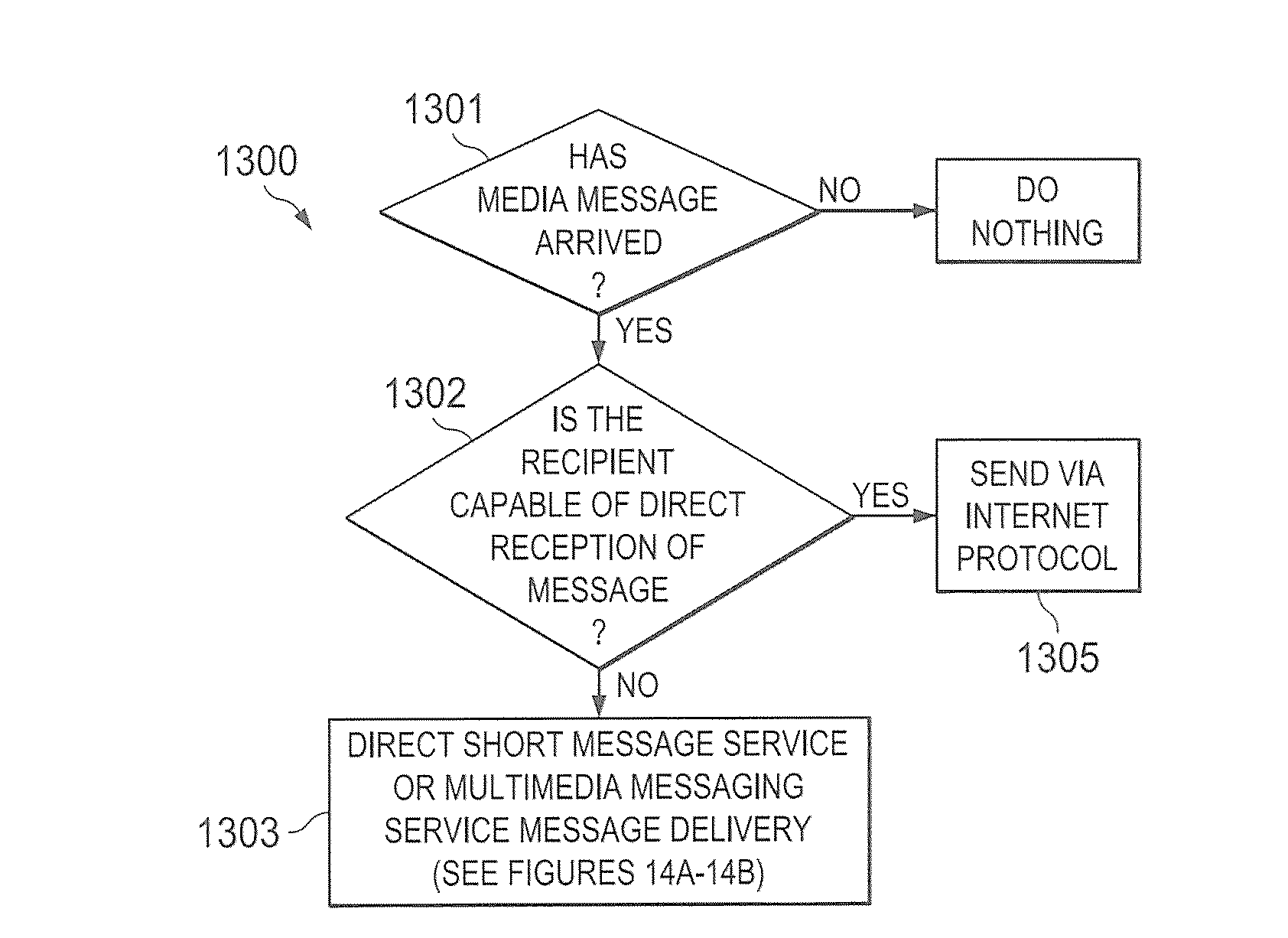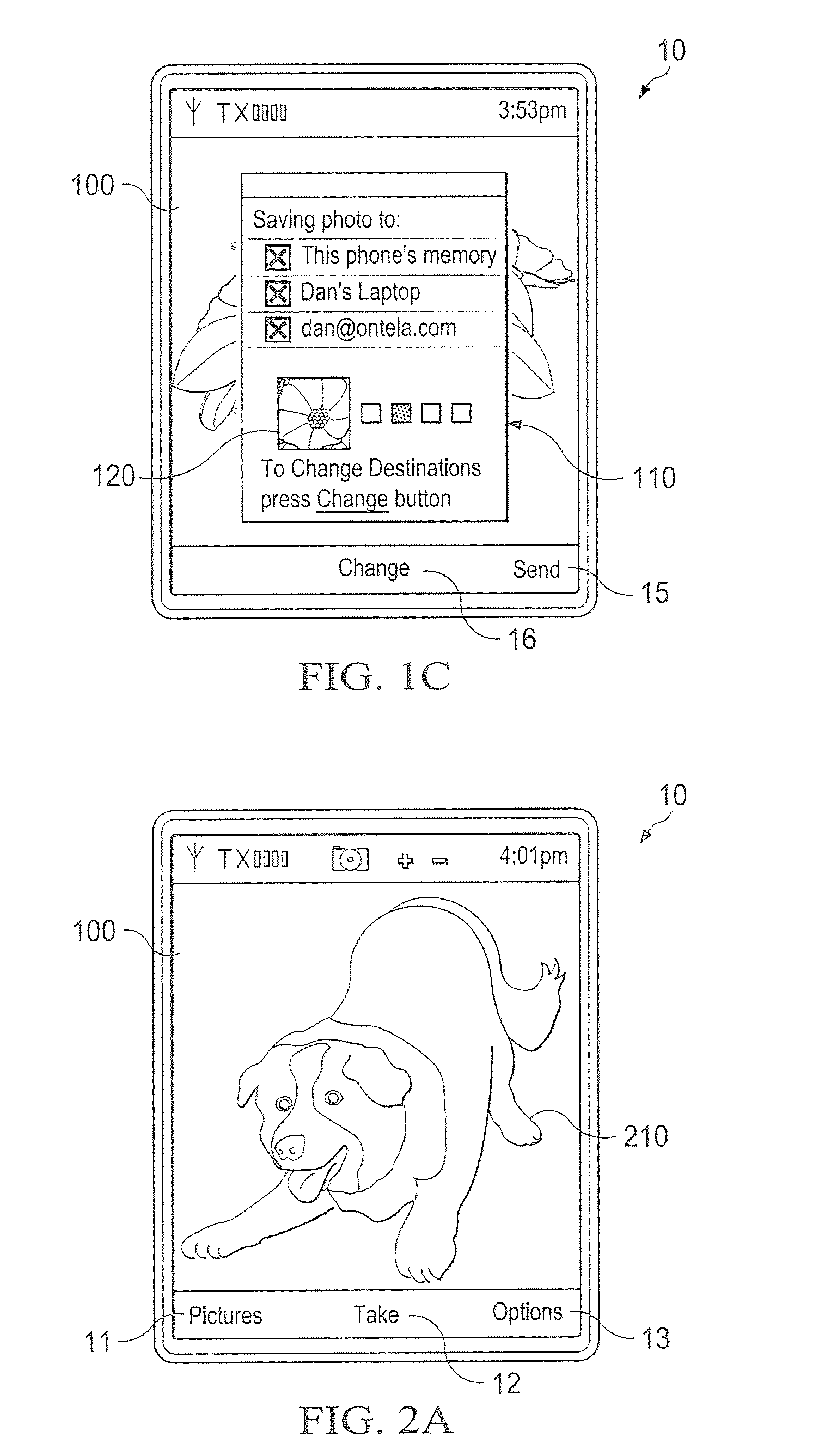System and method for allowing a user to opt for automatic or selectively sending of media
a technology of automatic or selective media transmission and user interface, applied in the direction of messaging/mailboxes/announcements, wireless commuication services, instruments, etc., can solve the problems of difficult control of selective distribution, unsatisfactory destination control procedure, and inability to send all newly created pictures to facebook
- Summary
- Abstract
- Description
- Claims
- Application Information
AI Technical Summary
Benefits of technology
Problems solved by technology
Method used
Image
Examples
Embodiment Construction
[0022]FIGS. 1A, 1B and 1C illustrate a sequence of media capture on a device, such as on a mobile cell phone, and sending the captured media to a pre-established location. The operations discussed with respect to FIGS. 1A, 1B and 1C are what we are calling the SAVE operation (the automatic transmission of a media file to default locations) and are discussed in more operational detail hereinafter and in the above-identified applications. It should be understood that the labels (such as SAVE, SEND, etc.) are representative only and that any name can be applied to a set of functions and it is the underlying functions that are important.
[0023]In FIG. 1A the user focuses viewer 100 of device 10 on object 120 to be captured photographically. Device 10 can be any device capable of taking (or receiving from another source) a photograph. As is well known, when the user positions object 120 in the viewfinder as he / she desires the user operates take button 12 to capture the desired image. Note...
PUM
 Login to View More
Login to View More Abstract
Description
Claims
Application Information
 Login to View More
Login to View More - R&D
- Intellectual Property
- Life Sciences
- Materials
- Tech Scout
- Unparalleled Data Quality
- Higher Quality Content
- 60% Fewer Hallucinations
Browse by: Latest US Patents, China's latest patents, Technical Efficacy Thesaurus, Application Domain, Technology Topic, Popular Technical Reports.
© 2025 PatSnap. All rights reserved.Legal|Privacy policy|Modern Slavery Act Transparency Statement|Sitemap|About US| Contact US: help@patsnap.com



